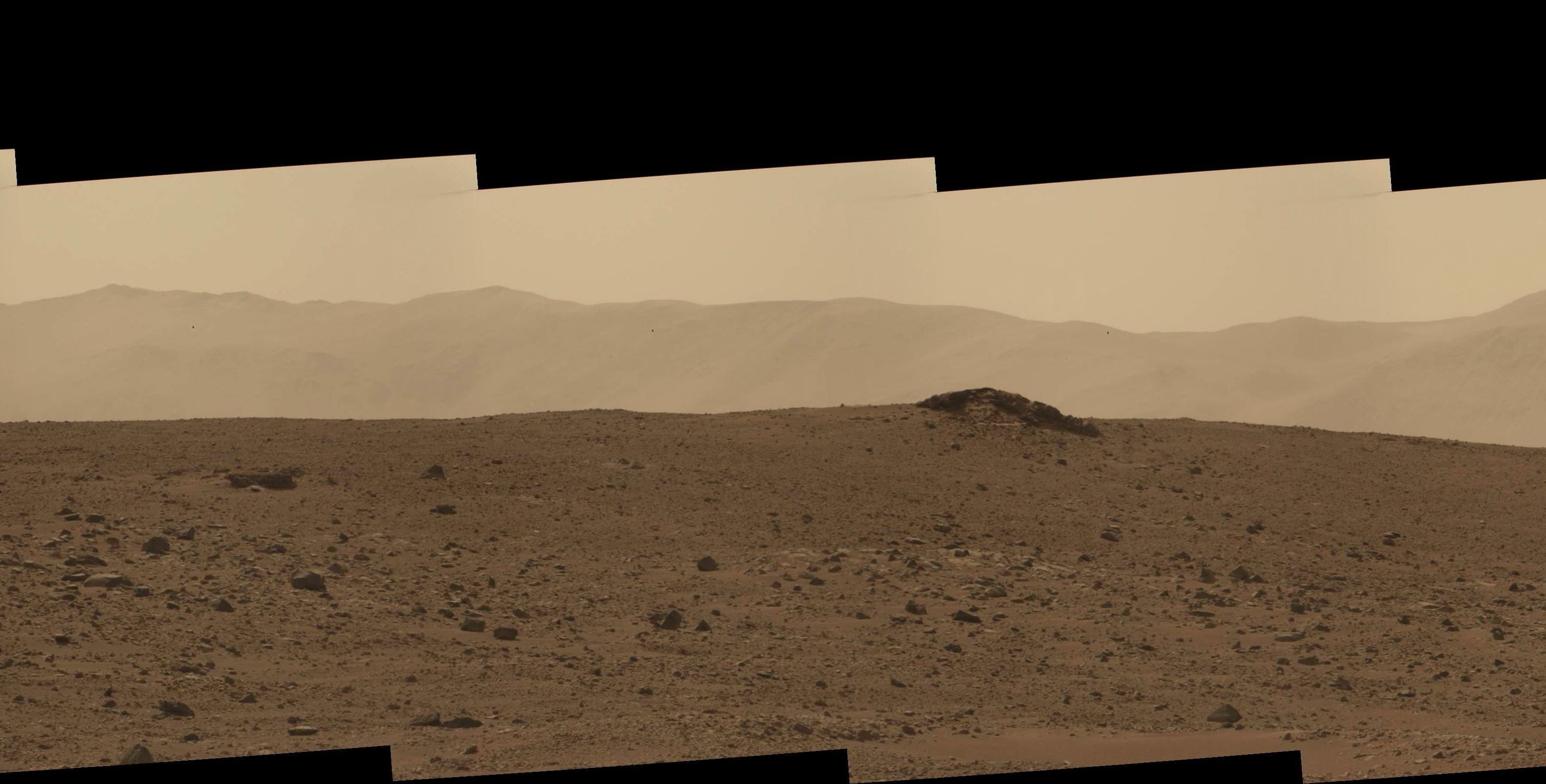The image above is a gorgeous view of the Curiosity rover’s surroundings in Gale Crater. However, it is just a sliver of an entire gigantic panorama put together by imaging wizard Stuart Atkinson. It’s made from 34 different images as Curiosity took in a full view of its environs. You can see the full panorama at Stu’s Gale Gazette website, where you can click on it to enlarge it, and as Stu says, “then take a good long look at the beautiful hills forming the rim of the crater. Just magnificent, aren’t they?”
Sure are. Stu told me via email that all this view is missing are “some sand ships hissing over the distant plain, glinting and flashing gold, sapphire and emerald in the sunlight, and a line of sword-swinging Tharks rushing towards the rover!”
Ah, I love Stu’s Barsoomian imagination…
Another imaging wizard from UnmannedSpaceflight.com, James Canvin, is also working on a Gigapan of some of the latest images and at last count has put together 371 images into one huge panorama! The Gigapan technology allows you to pan around and zoom in to see incredible details. Check it out.
UT writer Ken Kremer is also working on some new panoramas, along with his imaging partner Marco Di Lorenzo. Congrats are in order to Ken and Marco for the images, mosaics and panoramas they put together from the MSL mission being used in the PBS NOVA special presentation that aired this week, Ultimate Mars Challenge. The show is now available to watch online: on Universe Today here, or at the PBS website here. There is additional information about the show here.


WOW! Thanks you guys X 1,000,000! NO WONDER it’s taken so long for Curiosity to ‘get anywhere’! So many interesting rocks! My favorite are the ‘extruded looking’ volcanic chunks? No.. it’s the layered sedimentary? No.. it’s got to be the meteors laying around there somewhere? No.. it’s…..!
That is Amazing! An “I was There” experience! Thank you!
I was noted to the fact that the rocks are so sharp and “untouched”.. Doubtless because the Crater is young in geologic (marsologic) time?